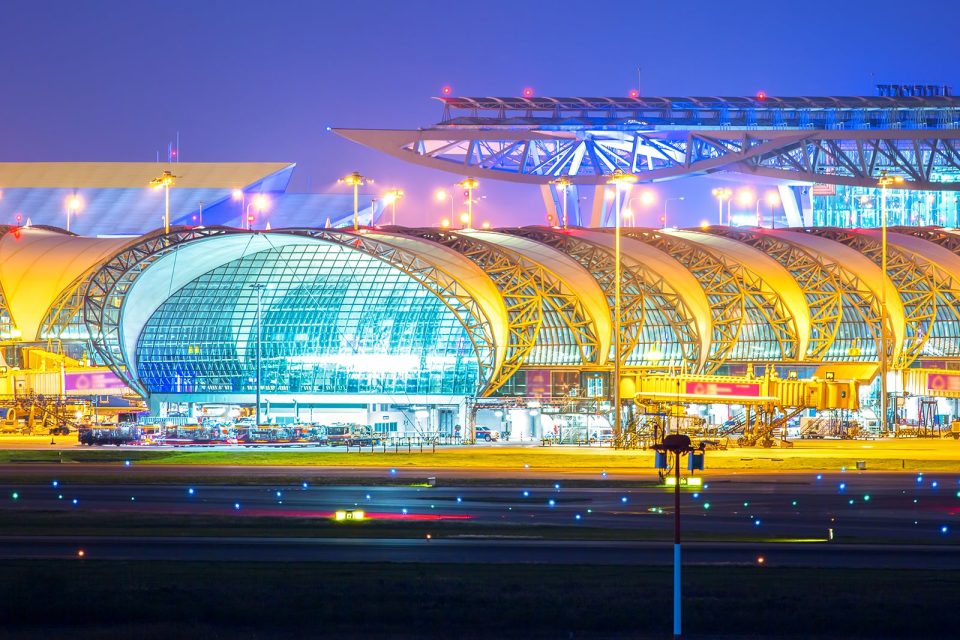The operator of Thailand’s two main airports plans to spend about US$4.8 billion to more than double capacity by the end of the decade to cope with a surge in post-coronavirus-pandemic tourism.
In the biggest expansion of Suvarnabhumi airport since it opened in 2006 in Samut Prakan province, two new runways, a new terminal and the expansion of the existing passenger terminal will increase annual capacity to 135 million travellers from about 60 million now, Kerati Kijmanawat, president of the Airports of Thailand (AOT) Public Company Limited, said in an interview. The project will cost about 140 billion baht ($3.7 billion), he said.
A new international terminal to be built at Don Mueang airport in Bangkok and renovation of the existing building, at a cost of 36 billion baht, will lift capacity to 50 million passengers a year by 2030 from 30 million now, Mr Kerati said. The older Don Mueang mostly handles regional and budget carriers.
AOT, as the state-controlled company is known, will use internal revenue for the projects and consider bank loans only if necessary, said the official. AOT is on course to more than double net income to 21 billion baht in the fiscal year ending Sept 30, according to analyst estimates compiled by Bloomberg.
The company is also keen to bid to build two new airports announced by Prime Minister Srettha Thavisin that may cost 70 billion baht each, either alone or in partnership, Mr Kerati said. Mr Srettha has proposed new gateways in Chiang Mai, a popular tourist destination in northern Thailand, and in the Andamans, near the resort island of Phuket — where the existing airports are struggling to cope.
Mr Srettha, a former property mogul, has vowed to turn Thailand into a regional aviation and logistics hub, building on the nation’s reputation as a tourist hotspot. He is also steering an initiative for a Schengen-type single visa for six Southeast Asian countries.
Changi challenge
Central to that plan will be AOT’s ability to increase passenger capacity and ensure a hassle-free experience for tens of millions of visitors to Thailand, whose spending make up about 12% of the country’s gross domestic product. But it faces challenges from regional airports like Singapore’s Changi — ranked the world’s second-best — and the need to improve Suvarnabhumi’s position from a low of 58.
For example, streamlined immigration procedures have cut waiting times at check-in and security to 35 minutes from 50 minutes in less than two months, Mr Kerati said, and the addition of about 80 automated immigration gates in October will ensure much smoother passenger movements.
AOT, Thailand’s second-largest company by market value, is on course to handle about 120 million passengers this year, compared with 150 million the year before Covid essentially shut down the tourism industry, Mr Kerati said. Only Chinese travellers have yet to return to pre-pandemic levels and will still be around only 70%-80% of pre-Covid levels by the end of the year, he said.
“If we don’t increase our capacity, we will face the same situation we had in 2019, where all airports were fully packed and we couldn’t take care of our passengers in terms of convenience and the reliability,” Mr Kerati said. “We are not only looking at the return of passengers, but also being a hub.”

The atmosphere at the passenger terminal of Don Mueang International Airport in Bangkok. (Photo: Pattarapong Chatpattarasill)
This year, Thailand aims to welcome 35 million to 40 million foreign tourists, close to the pre-pandemic record of 40 million visitors in 2019. Mr Srettha’s administration has set a goal of attracting 80 million tourists by 2027 and is also mulling a plan to open casinos inside large entertainment complexes and promote event-based tourism to help the country generate more revenue.
AOT shares have gained about 8% this year, outperforming a 3.3% decline in the nation’s benchmark SET Index.
credit Bangkok post




